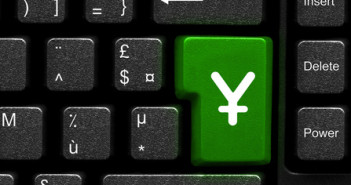In an entirely fitting move to celebrate the Halloween holiday, the Bank of Japan surprised market participants overnight by picking up the liquidity baton and “treated†the markets to an expansion of the central banks’ asset purchase program.
While the prospect of the BoJ upping the dosage on their QE program had been a high probability, the timing of the move is what has caught the markets off guard this morning, sending equities ramping higher and causing a Halloween day massacre of the Yen.
The central bank announced they would increase the current target for their bond purchase program from ¥60-70trn to ¥80trn, while expanding the purchase of ETFs to ¥3trn and enlarging the universe of eligible securities for purchase.
BoJ Governor Kuroda stated the move to expand the bank’s asset purchase program was a decision that showed the BoJ’s unwavering determination to rid deflationary concerns and prop up economic growth, while also opining that he didn’t think an exit from the easing program would be difficult.
The decision for the BoJ to swell its balance sheet was narrowly won by a slim majority of 5-4, and after the dust settled sent the Nikkei soring by 4.83% while the Yen fell off a cliff as USDJPY now trades just below the 112 handle. So while equity markets are enjoying their Halloween “treat†the question now becomes where the “trick†lies, and by our estimations it will be higher energy import costs, ballooning trade deficits, and a worse economic environment for small businesses that aren’t export intensive. That being said, unless there is a drastic internal shock to the American economy, the widening of monetary policy divergence between the Fed and BoJ will continue over the coming year, and the likelihood of seeing a 115 before a 108 is a much greater probability.
Heading into the North American open, there is little else traders will be focusing their attention on besides the BoJ’s shock tactics from overnight, which have pushed S&P futures up almost a full percent, and the exodus of Yen positioning has boosted the greenback across the other major currency crosses.
The Loonie has felt the negative effects of the meteoric rise in USDJPY, with the pummeling being compounded with a slightly negative Canadian GDP print for the month of August which showed that growth slipped by 0.1% from the previous month, another soggy reading that isn’t making Q3 look all that positive for the Canadian economy. Year-end fixing flow from Canadian banks have exacerbated the liquidity situation for Loonie trading the past few days, so the short-squeeze initiated from the greenback strength on the BoJ and Loonie weakness after GDP figures has USDCAD approaching the high-1.12 area.
Another run at the stops of USD bears could be likely considering month-end rebalancing and the stretched liquidity positions, though the 1.13 handle will likely elicit a strong offer tone from the corporate crowd.
More: EUR/USD collapses below 1.25 – bounces back
In our latest podcast, we review November’s big event and run down the recent ones:
Download it directly here.
Subscribe on iTunes page



